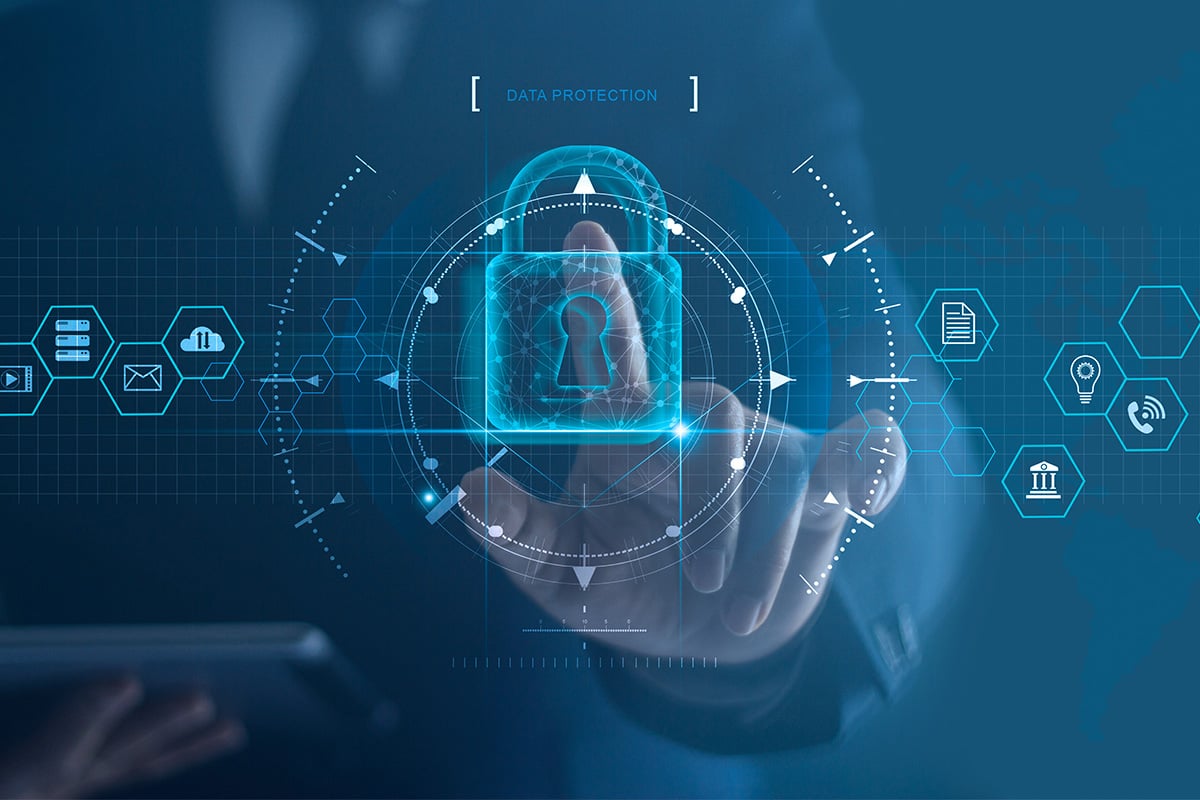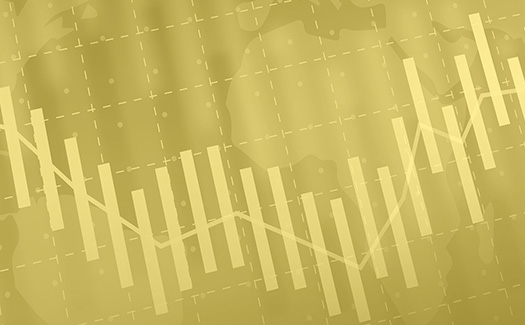A key risk indicator (KRI) is a figure companies or analysts use to measure risk. KRIs help organizations track specific risk factors — including growth rates, customer feedback, and employee turnover rates — that can negatively affect performance.
Organizations of all sizes can use KRIs to proactively identify and manage risks rather than reacting to risks after they occur. Company leaders decide on specific KRIs to track based on their market, past performance, and other factors. Many companies monitor KRIs in combination with other risk management tools, including control testing and continuity planning, to manage their holistic risk profile.
KRIs also play a key role in ensuring organizational compliance, providing an early warning system for potential compliance risks. Companies that actively monitor KRIs can identify and mitigate compliance issues before they arise or before they worsen. For example, a company could monitor KRIs to prevent a data breach.
Why Is KRI an Important Part of Risk Management Strategy?
KRIs are an integral part of a comprehensive risk management strategy. Along with other risk management tools and strategies, monitoring KRIs gives your organization valuable information on both internal and external threats.
Among other benefits, it gives your company the first step in responding to risks. By monitoring key indicators, your company can clearly identify early warning signs of potential problems. You can then eliminate these risks before they cause harm.
KRIs also help businesses better understand the impact of different types of risks. For example, your business might track risks associated with revenue, reputation, and employee retention. By measuring the impact of all these risks, you can prioritize your risk management efforts according to the most present threats.
Actively monitoring your KRIs is a great way to support risk management software. Even if your company has already implemented a risk management program, KRI monitoring provides an extra layer of protection by revealing hidden insights within your own data.
KRIs are important for any company trying to achieve compliance, reduce costs, avoid wasted spend, retain employees, or improve their own operations.
Characteristics of a Good KRI
Not all KRIs are created equal. Depending on your company, your market, your competition, your workforce, and other factors, some KRIs might help you better predict and manage risk than others.
Here are some of the characteristics of a good KRI for your organization:
- Relevant: A good KRI should be directly relevant to the risk you’re monitoring. This means your KRI should provide information that is useful in understanding and preventing one, or several, potential risks.
- Measurable: KRIs should be measurable, meaning that your team can quantify the risk at all times. Measurability helps companies not only detect risks but also monitor those risks as they grow and change over time.
- Comparable: A good KRI is comparable to other KRIs, industry benchmarks, and other figures that help companies determine the level of risk. This helps your company measure the threat of one risk over the threat of another.
- Actionable: Good KRIs are actionable, providing information you can use to make decisions and mitigate risks as they evolve.
- Consistent: A good KRI is consistent over time. Your company should be able to identify, track, measure, and report on a KRI in the same way over time.
Together, a complete portfolio of KRIs can help your company better manage risk. Your group of KRIs creates a more accurate risk assessment, better than monitoring a single KRI without information on the others.
Risk assessment tools can further help your company monitor and prevent risk. They help provide additional context around certain risks, while proactively monitoring your company’s personnel, devices, and information for threat detection. The right risk assessment tool can even help your company better monitor its KRIs by adding even more information to your KRI figures.
Examples of Common KRIs
Many companies consider KRIs a necessity for identifying, analyzing, and eliminating potential risks before they escalate. Your company might track a range of different KRIs, depending on your industry, product portfolio, and any other risks you might face.
Here are a few examples of common KRIs your company might use:
- Internal costs: expenses a company incurs as part of their normal business operations
- Sales growth rate: the rate at which a company grows its revenue over time, typically expressed as a percentage
- Cyberattack frequency: the number of times a company is targeted by cyberattacks during a certain period of time
- Brand reputation: the way customers perceive a brand, influenced by factors like product/service quality and pricing, advertising, and customer service
- Product/service quality control: regular improvements a company makes to products or services to ensure that customer needs are continually met over time
- Project completion rate: the percentage of projects that are fully completed on time and under budget
- Supply chain disruption: any interruptions to a company’s flow of goods and services, often caused by issues with weather, transportation, international borders, and external fees
- Staff satisfaction rate: the percentage of company employees who report being satisfied with their responsibilities, work conditions, and compensation
- Market conditions: the state of a particular industry, influenced by factors like supply and demand, economic conditions, buyer tendencies, and competition
- IT system uptime: the amount of time that a company’s internal computer systems and external digital assets, including website and social media, are operational and available for use
- Employee turnover rate: the rate at which employees leave a company and are replaced by newly hired employees
Companies will routinely monitor these, and many other KRIs, to continually assess the risks that are most relevant to their organization.
It’s important to note that companies don’t need to monitor every risk factor at once. Instead, they should choose KRIs that provide early warning signs of potential risks. KRIs should also be used alongside other risk detection and management methods, including regular company audits.
How KRI Is Used in Enterprise Risk Management
KRIs can also be integrated as part of a larger enterprise risk management strategy, proactively monitoring potential risks and alerting decision-makers when risks evolve.
Enterprises that monitor Key Risk Indicators can understand, and react to, emerging risks before they worsen. The same risk management strategies also help companies learn more about their risks, gathering information that’s useful in helping the entire company improve operations.
When new risks appear, companies using KRI alongside an enterprise risk management strategy are already prepared to act. They can adjust their approach in ways that mitigate risks without slowing operations. This adjustment creates new opportunities for efficiency and transparency with customers and internal team members.
A full risk management strategy is far more than a checklist of KRIs. Companies with high-performing enterprise risk management strategies also use tools like technology and analytics, creating a comprehensive risk management system. Risk management technology can help audit computing systems and scan for network vulnerabilities, using company data available through an analytics program.
Many companies also add a claims management system to their suite of risk management solutions. These programs ensure that all financing risks are identified, tracked, and managed. Particularly for companies with high claims counts or potential loss, claims management is important in reducing claims-related costs and digitizing all paperwork — saving your claims teams valuable time.
Key Performance Indicator vs. Key Risk Indicator in Risk Management
Companies that implement a proper risk management strategy often track both KRIs and Key Performance Indicators (KPIs). While both types of figures measure company progress, they serve different purposes in risk management.
KPIs are metrics that measure the performance of a company, usually against company objectives. For example, a company might monitor quarterly sales or total closed deals to identify how well staff performed toward meeting sales goals.
While KRIs do help companies measure some aspects of performance, they’re primarily used to identify and assess potential risks. They help businesses detect emerging risks by tracking a range of internal and external factors. For example, your company might decide to track data on customer complaints, employee turnover, or regulatory compliance to measure potential risk.
Together, KRIs and KPIs contribute to a more comprehensive overall risk management plan. Companies that monitor major aspects of their performance and risk profile are prepared for growth and change. They pursue growth while remaining fully aware of risks to their short- and long-term success. Full KRI and KPI monitoring gives companies visibility into all things performance, progress and risk.
Many companies consider risk mitigation an important step in protecting performance. Risk mitigation helps to minimize the potential negative impact of risks on company performance, even if those risks have already emerged. Depending on your company’s risks and service model, your risk mitigation strategies might include implementing security measures, purchasing insurance, or protecting yourself from compliance violations.










